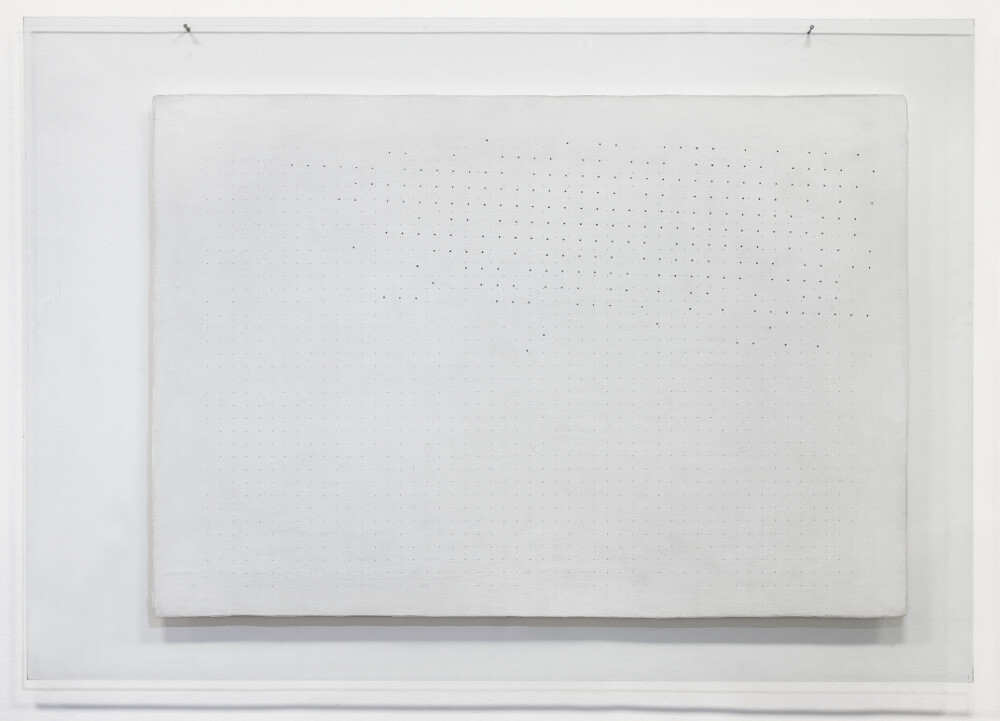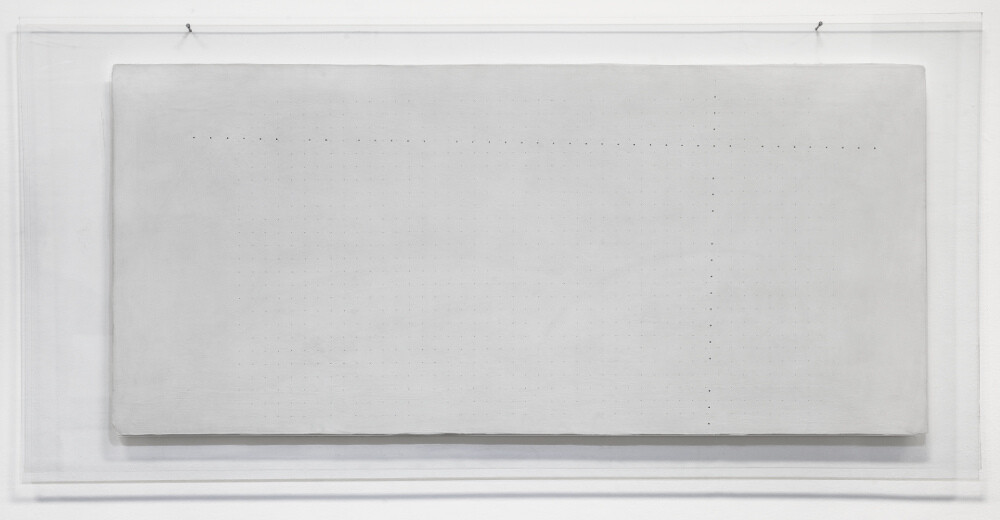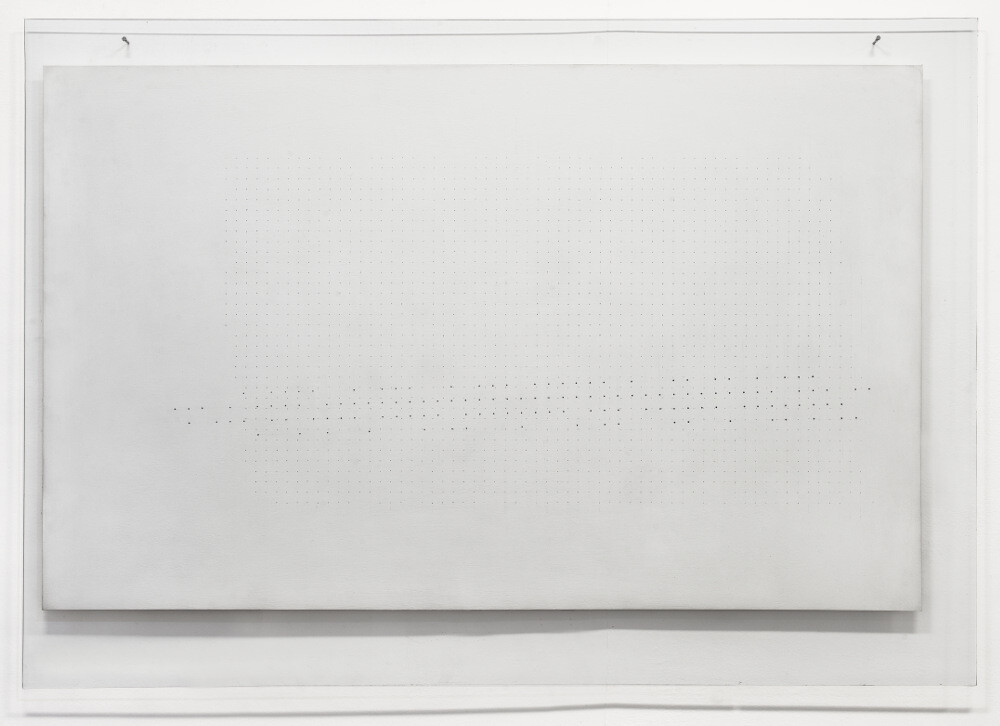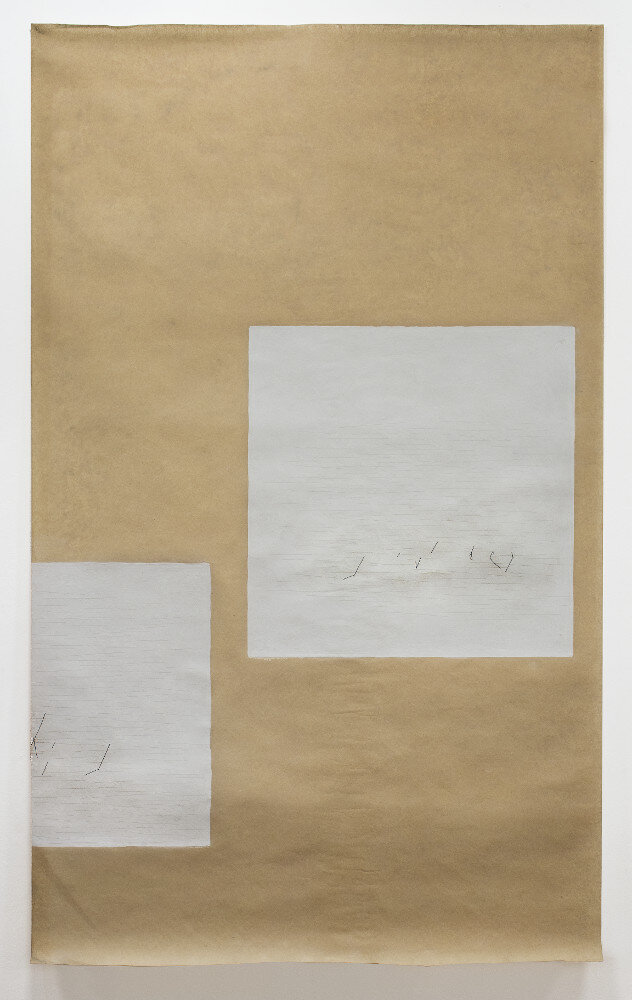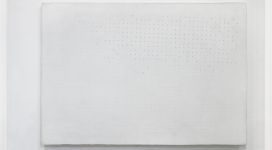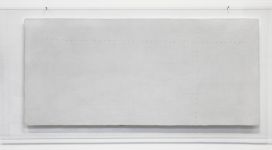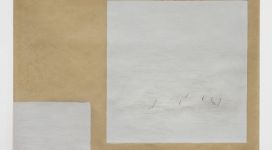| MARCO GASTINI | Exhibition 2016 | |
| Catalog |
Marco Gastini was born in 1938 in Turin. He went to art school and then specialized in painting at the Accademia Albertina academy of fine arts in Turin, after gaining technical and professional experience in his father’s marble-cutting workshop. Following his artistic debut in the late art informel period, he went on to produce less material-laden painting, in the form of female nudes or landscapes which were presented by Paolo Fossati and Enrico Crispolti in 1967 and 1968 in his first solo exhibitions at the La Steccata gallery in Parma, Il Girasole Arte Contemporanea in Rome and Pozzi Arte Contemporanea in Novara. At the end of the 1960s, his research into the sign, spatial presence and the cancellation of colour led him to devise his own personal research into painting, with spray-painted canvases (Paesaggio – Landscape – Galleria Il Punto, Turin, 1968), enamels and flocking on Plexiglas, wood or Vedril (Linea d’aria – As the Crow Flies – Salone Annunciata, Milan, 1969). Later, his painting on glass, neon or small Plexiglas boxes became denser to form lead and antimony-coloured stains. One of the pioneers of ‘analytical painting’ in the early 1970s, he began to make works on walls: rigorous chequered grids and basic plots in cement dust, charcoal or conté (18 x 18 / 3 rossi + 1 – 18 x 18 / 3 reds + 1), preceded by project plates in Durcot on Plexiglas (Progetto per parete – Project for Wall). However, the artist did not abandon canvas, making minimal signs on it that take note of the space and measure it with simple geometries (Acrilico n. 5, 10/1, AYZ – Acrylic no. 5, 10/1, AYZ), while still on his scratched Plexiglas works, the gestures ‘lived’ and revealed themselves on the invisible medium. His experiments continued with the use of ‘pearl white’ pigment, mother-of-pearl, which he began to apply to canvases, paper or the wall in 1977, as he left behind his ‘non-colour’ period. That same year the artist held his first solo at the John Weber Gallery in New York – which he would collaborate with for many years to come – followed by many more, again abroad, between the 1970s and 80s, from Argès and Baronian in Brussels, to Annemarie Verna in Zurich, D + C Mueller-Roth in Stuttgart and Walter Storms in Munich. The following decades would be a constant alternation of solo and group exhibitions, in Italy and abroad. For example, at Studio Grossetti in Milan, the Primo Piano and Sperone galleries in Rome, Il Banco in Brescia and Christian Stein in Turin. The first monograph on Gastini dates from 1976. Written by Paolo Fossati, it was published by Christian Stein himself. A further monograph followed in 1988 for Edizioni Essegi in Ravenna. Again in 1976, Gastini took part in the XXXVII Venice Biennale with a solo room. Filiberto Menna reviewed the solo at Galleria E Tre in Rome (1977) and Pier Giovanni Castagnoli the show at Studio G7 in Bologna (1979). By the end of the decade, the painting had broken out of the surface of the canvas, paper or other media, and conquered the wall; at the same time, his stylistic code (artistic language) was sealed with the use of different materials such as parchment, glass, metals such as iron, copper and tin, as well as organic elements like coal, vegetables similar to carobs, and after that stone. At the beginning of the 1980s, he brought back colour, with more complex, material and bright coloured blends of pigments and binding agents. In this decade, and thereafter, he held many solo and group exhibitions in Italy and abroad, which confirmed his renown as an artist: in 1982 he took part in the Venice Biennale again and the monograph by Tommaso Trini came out. The Städtische Galerie im Lenbachhaus in Munich hosted his first big retrospective, curated by Helmut Friedel; this was followed by a solo at the Galleria Civica in Modena (1983), accompanied by a catalogue with a critical text by Flaminio Gualdoni, and at the PAC in Milan (1984). In this period Gastini made immensely large works: from 1987, at Castel Burio, is La nave vichinga solca i filari (The Viking Ship Cuts Through the Lines), a site-specific open-air installation in close dialogue with the surroundings, and, from 1988, Il sogno respira nell’aìre (The Dream Breathes in Momentum) in Piazza Pecori in San Gimignano. He made large-scale works in the 1990s too, alongside a series of works featuring the use of iron, with a string of exhibitions in North Europe, Italy and on the other side of the Atlantic: Galerie Branstetter & Wyss, Zurich, John Weber Gallery, New York (1990); Studio La Città, Verona (1991); Galleria Civica d’Arte Moderna, Bologna (1992, with critical text by Pier Giovanni Castagnoli); Galleria Civica di Arte Contemporanea, Trento (curated by Danilo Eccher), Kunstverein, Frankfurt and Sangallo (1993, curated by Peter Weiermair, Petra Kirchberg, Roland Waspe); Studio G7, Bologna (1996); and Galleria Il Cenacolo, Trento (1999). Among others, the new century counts the retrospective at GAM in Turin (Palazzina della Società Promotrice delle Belle Arti) and the Städtische Galerie im Lenbachhaus in Munich (2001), curated by Pier Giovanni Castagnoli and Helmut Friedel; and the show at CAMeC in La Spezia and at the Kunsthalle di Göppingen presented by Bruno Corà and Werner Meyer (2005). At private galleries, he has had solo shows at Galleria dell’Oca in Rome (2005), Otto Gallery in Bologna (2006), Galleria 2000 & Novecento in Reggio Emilia (2007), Galleria Giorgio Persano in Turin (2008), Galleria dello Scudo in Verona (2008-09), Galleria Progettoarte-elm in Milan (2012), Galleria Antonella Cattani Contemporary Art in Bolzano (2014), and Galleria Il Ponte in Florence (2016). Gastini made installations for the church of San Giacomo in Treville (2005) and the wood at Bossolasco (2008); in Turin, for Luci d’Artista, since 2009 a permanent carpet of modelled blue neon signs has radiated out towards the ceiling of Galleria Subalpina.
